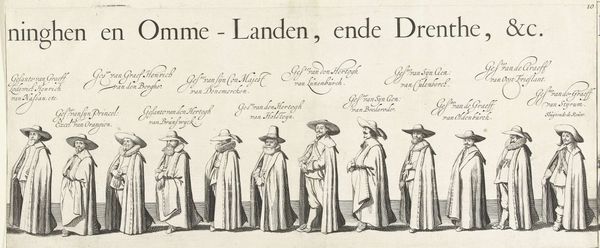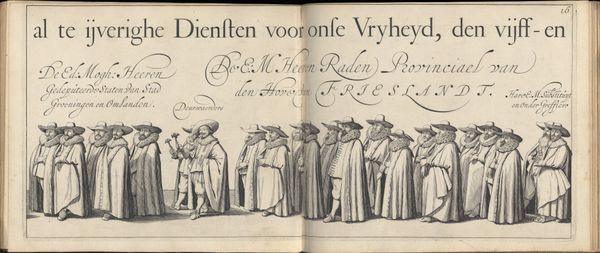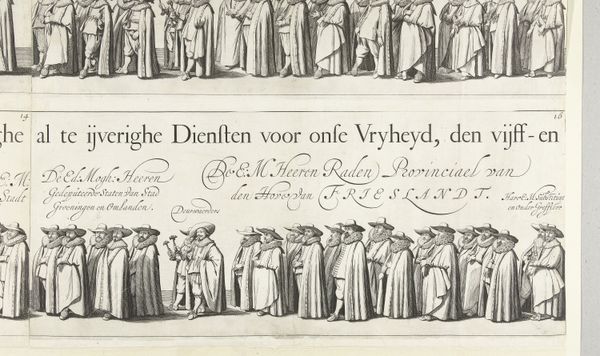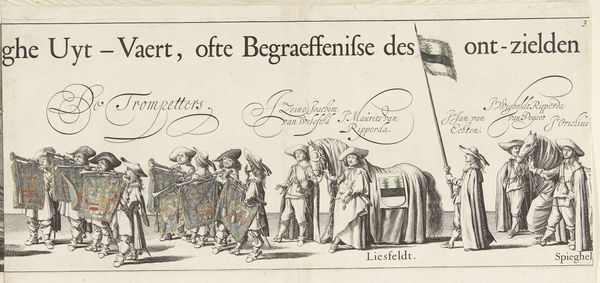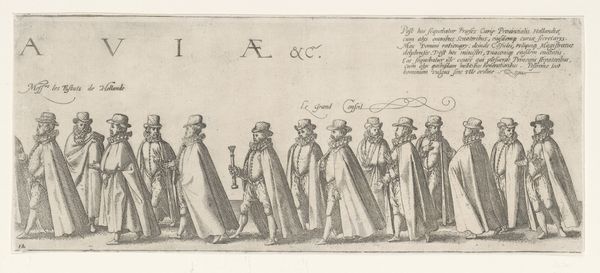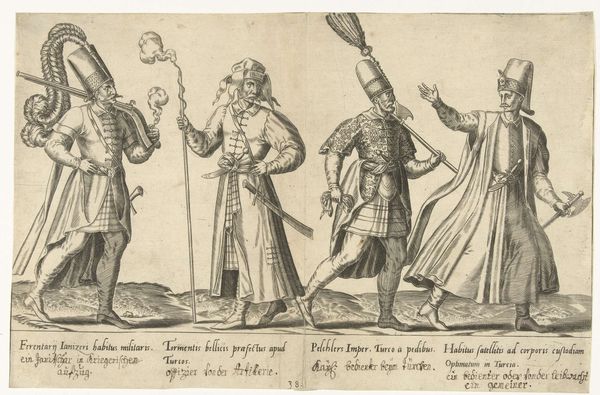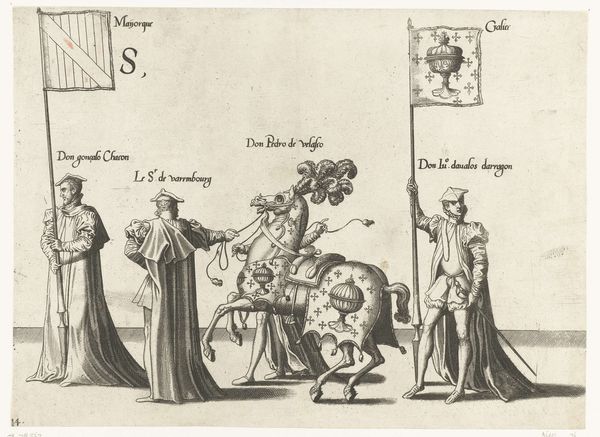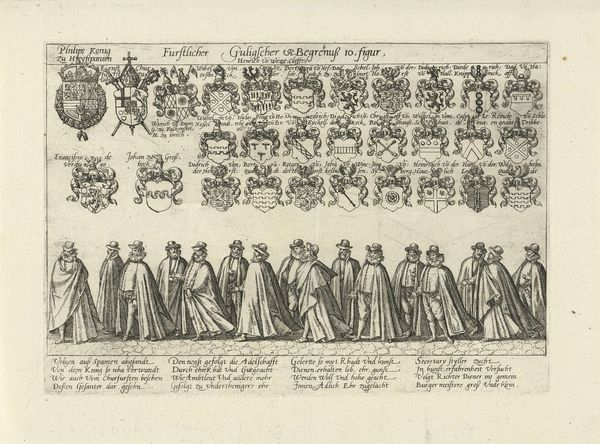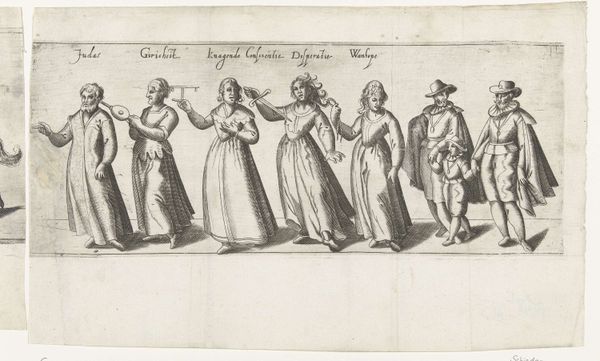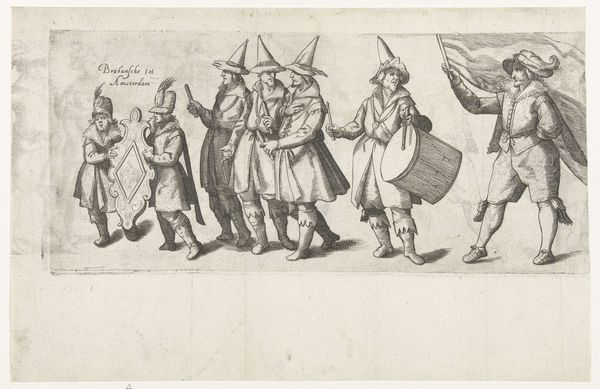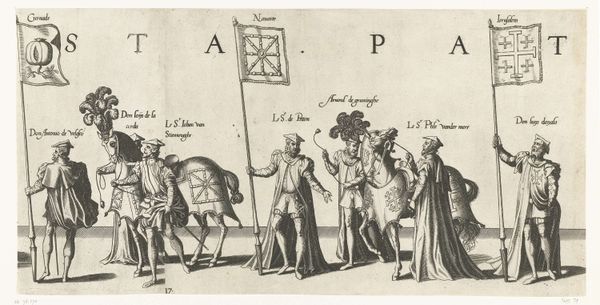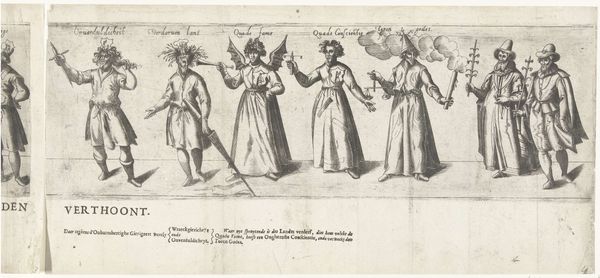
Deel van de begrafenisstoet van Ernst Casimir, graaf van Nassau-Dietz te Leeuwarden (plaat 7), 1633 1634
0:00
0:00
jhermans
Rijksmuseum
print, engraving
#
baroque
# print
#
history-painting
#
engraving
Dimensions: height 220 mm, width 485 mm
Copyright: Rijks Museum: Open Domain
This engraving by J. Hermans depicts part of the funeral procession of Ernst Casimir, Count of Nassau-Dietz, in Leeuwarden in 1633. The somber procession is marked by potent symbols: the mourning horse, draped entirely in black, is an emblem of grief and nobility. The sword carried upright evokes a sense of power and military honor, underscoring the Count’s status and valor in life. These motifs echo across history. The draped horse, for instance, appears in Roman funerary art, signifying the deceased's rank. Similarly, the sword as a symbol of authority can be traced back to ancient empires, reappearing in medieval heraldry. Consider how a symbol of power, like the sword, evolves: once a practical tool for defense, it becomes a signifier of social status. Such symbols tap into a deep reservoir of collective memory, engaging viewers on a subconscious level with enduring concepts of death, honor, and legacy. The emotional weight of these images serves as a testament to their continued cultural relevance, demonstrating how symbols traverse time, subtly shifting in meaning.
Comments
No comments
Be the first to comment and join the conversation on the ultimate creative platform.
